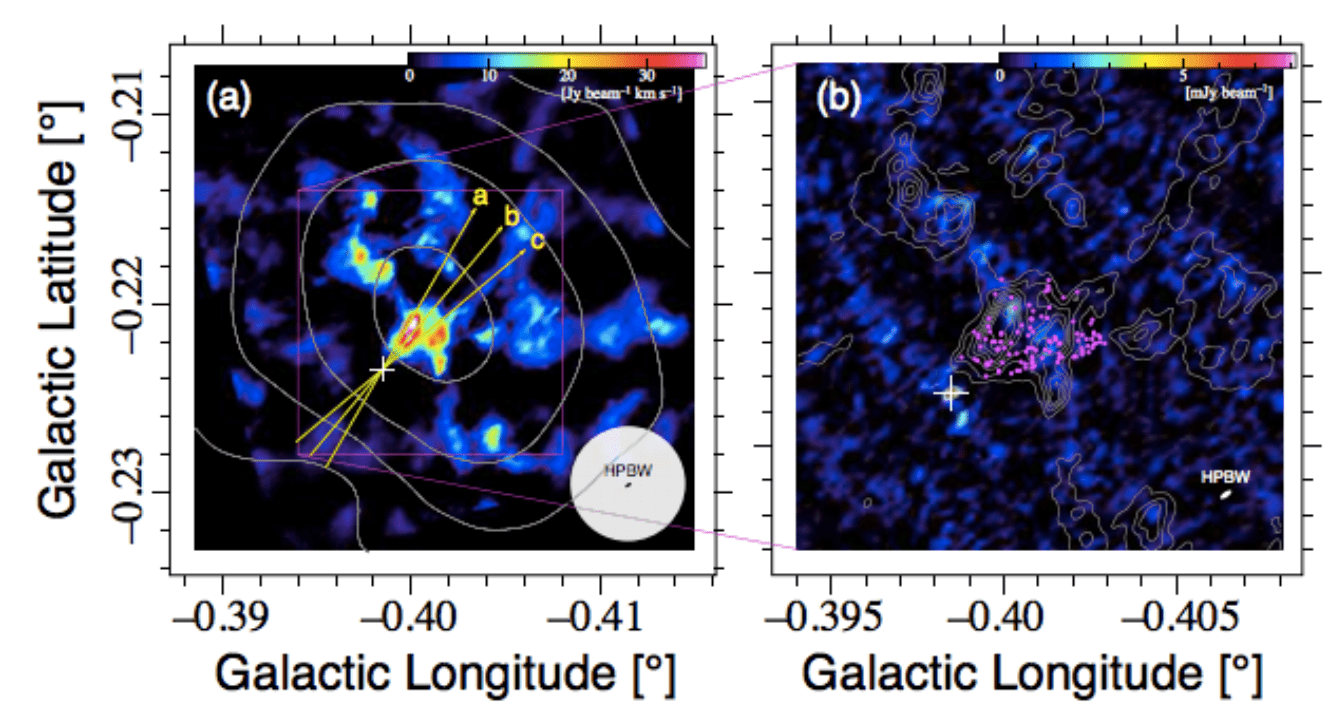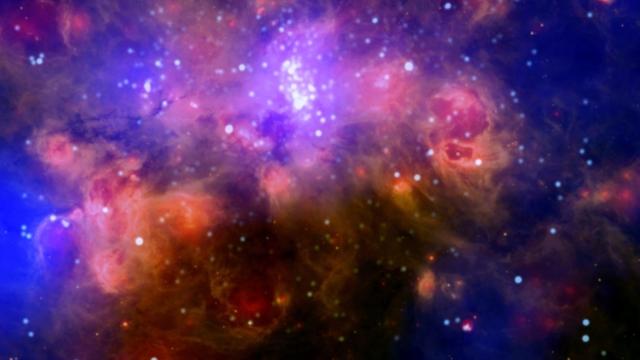Science fiction doesn’t exist to make movies about the stuff we know about — it explores the unknown physics, astronomy, biology and chemistry where real uncertainty about topics can lead to compelling, believable stories. That’s what makes black holes such a popular subject; light can’t escape them, maybe they’re portals across space and time, and they seem to break the rules. But who needs fiction when there are already incredibly strange mysteries in the real world?
Scientists spotted the intermediate mass black hole in a molecular cloud like this one (Imae: X-ray: NASA/CXC/PSU/L. Townsley et al; Infrared: NASA/JPL-Caltech)
Today, a team of Japanese researchers are reporting strong evidence for a kind of black hole, one that fills in the mysterious gap between black holes around the mass of a star and supermassive black holes in the centre of galaxies. The fact that we haven’t seen any of these “intermediate-mass black holes” before is super weird.
“It’s like walking around the world and seeing only newborn infants and really old adults,” Grant Tremblay, astrophysicist at the Harvard-Smithsonian Center for Astrophysics not involved with the new study told Gizmodo. “[We’re] not seeing any adolescents or early or middle aged people.”
A few kinds of black holes definitely exist, or at least our observations have shown strong enough evidence that scientists feel comfortable concluding them to be black holes. Some are about the mass of a big star, like those observed by gravitational wave detectors. Then there are enormous ones such as Sagittarius A*, the bright radio wave source four million times the mass of the Sun in the centre of our galaxy. But without an observed intermediate-mass black hole, scientists don’t know how something like Sag A* got to be so big.
“Although many candidates for [intermediate-mass black holes] have been proposed, none is accepted as definitive,” the researchers write in a study published today in the journal Nature Astronomy. But now, they think they have found one.
“In the previous paper, we suggested that an intermediate-mass black hole may be lurking in the peculiar molecular cloud, CO-0.40-0.22, based on the observed gas kinematics,” study author Tomaharu Oka from Keio University in Japan told Gizmodo. “The detection of a point-like radio continuum source, CO-0.40-0.22*, near the center of CO-0.40-0.22 confirmed our previous suggestion.”

Telescope observations of the bright point source CO-0.40-0.22 (Oka et al, arXiv (2017))
If all that sounds confusing, they essentially spotted a dense cloud of stuff near the centre of the Milky Way called CO-0.40-0.22. They took a closer look using the Atacama Large Millimetre/submillimeter Array (ALMA), a fairly new, super-advanced array of telescopes in Chile. Near the gas cloud they spotted a peculiar spot, an object about one 500th the brightness of Sag A*, that was smaller than the telescope could resolve. That kind of spot could be a lot of things, but this one specifically didn’t come with an infrared signature or other light signatures that would imply it was a cluster of stars or a galaxy shining behind the cloud.
With the other options ruled out, they concluded that their observations were consistent with a black hole around a hundred thousand times the mass of the Sun.
Others haves spotted similar sources, but almost all come with ambiguity preventing a true claim of discovery. Tremblay thought the Japanese team’s analysis was convincing, but there’s a long road ahead. “They won’t say they have a confirmed intermediate mass black hole,” he said. Other astronomers still need to observe the source in the radio wave spectrum of light, they need to see how it varies in time (a black hole might flash), and they need to see how the surrounding gas cloud moves. “We have a promising candidate that’s a rich target for future follow up which is how astronomy works,” said Tremblay.
The Japanese team knows they’re only just getting started. “We have already detected several candidates for stray black holes,” said Oka. “Some of them (currently in preparation) seem very large.”
And how does this all feel? Said Oka: “I am really excited, I feel happy.”
